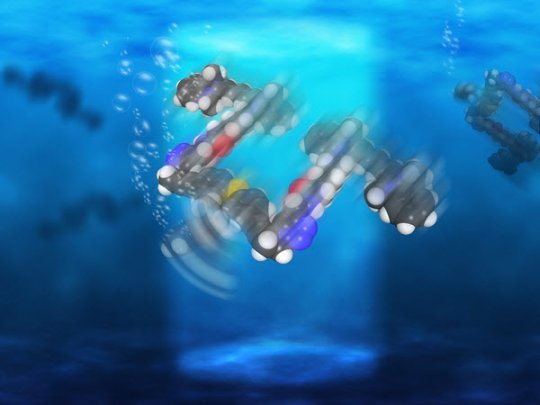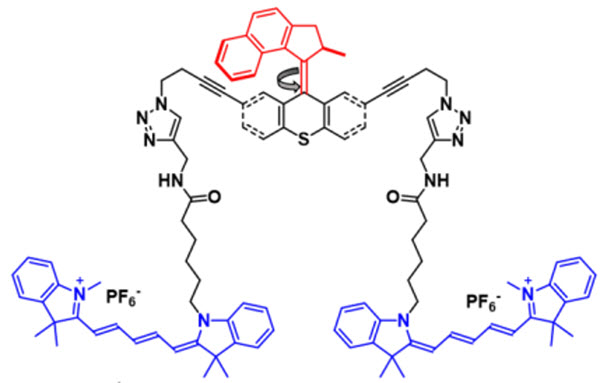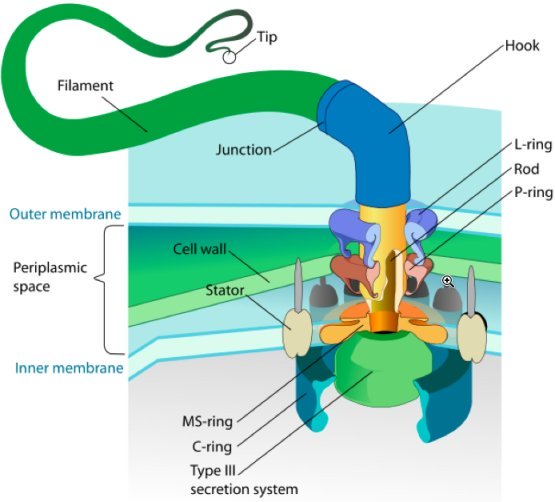
Rice University scientists have created light-driven, single-molecule submersibles that contain just 244 atoms (credit: Loïc Samuel/Rice University)
With each full revolution, the motor’s
While they can’t be steered yet, the study proves molecular motors are powerful enough to drive the

This chemical schematic shows the design of single-molecule nanosubmersibles created at Rice University. The nanosub’s fluorescent pontoons are blue; the motor is red. (credit: Victor García-López/Rice University)
In 2006, Tour’s lab introduced the world to nanocars,
Tour said many scientists have created microscopic machines with motors over the years, but most have either used or generated toxic chemicals. He said a motor that was conceived in 2009 by a group in the Netherlands proved suitable for Rice’s submersibles, which were produced in a
«These motors are
Operate like a bacteria’s flagellum

A nanosubmarine found in nature: this whip-like flagellum powers a bacterium’s swimming (credit: LadyofHats/CC)
The motors, which operate more like a bacteria’s flagellum than a propeller, complete each revolution in four steps. When excited by light, the double bond that holds the rotor to the body becomes a single bond, allowing it to rotate a quarter step. As the motor seeks to return to a lower energy state, it jumps adjacent atoms for another quarter turn. The process repeats as long as the light is on.
For comparison tests, the lab also made submersibles with no motors, slow motors, and motors that paddle back and forth. All versions of the submersibles have pontoons that fluoresce red when excited by a laser, according to the researchers.
Once built, the sub’s performance was independently confirmed by Gufeng Wang at North Carolina State University.
Rice’s researchers hope future nanosubs will be able to carry cargoes for medical and other purposes. «There’s a path forward," Garcí
Wang is an assistant professor of analytical chemistry at North Carolina State. Tour is the T.T. and
The National Science Foundation, the National Institutes of Health, the Welch Foundation, and North Carolina State supported the research.
Abstract of Unimolecular Submersible Nanomachines. Synthesis, Actuation, and Monitoring
Unimolecular submersible nanomachines (USNs) bearing
references:
Víctor Garcí
http://www.kurzweilai.net/a-molecular-


